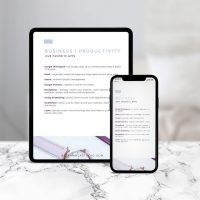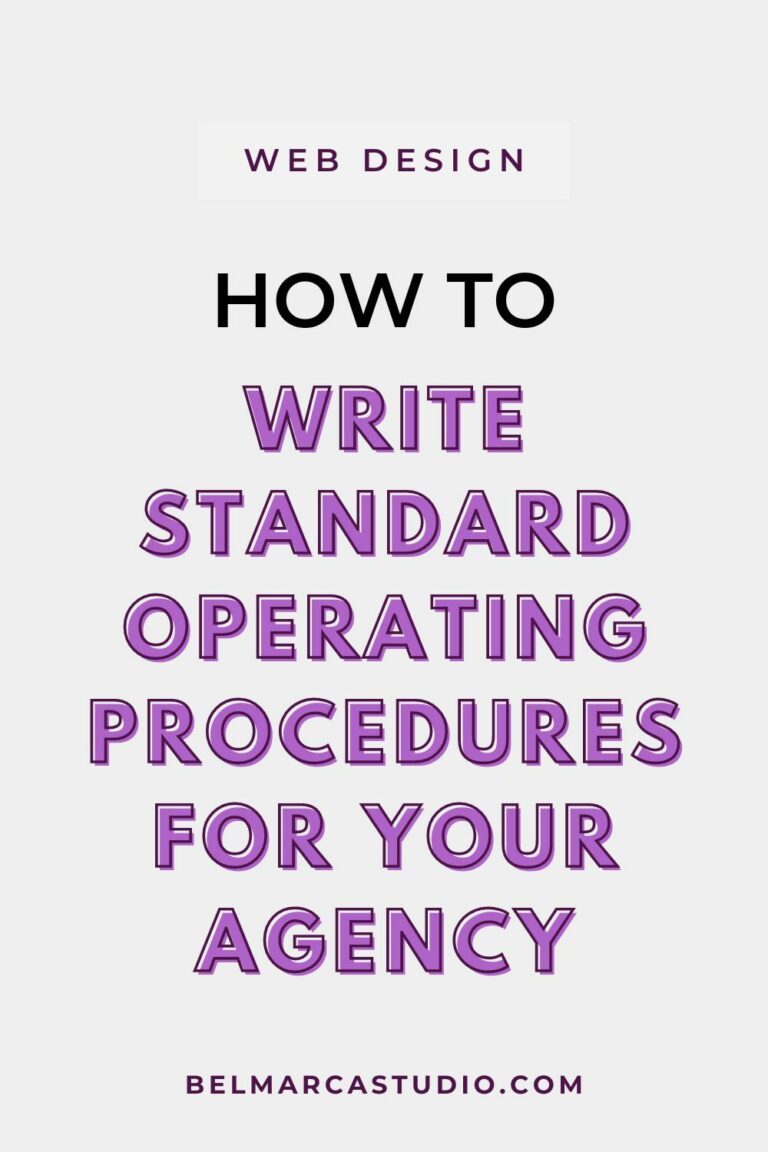You might agree that when you were in school, you weren’t always excited about every class or lesson that was being taught (#IStillCantDoMath). And it probably didn’t get any better in college, and you were paying! On the other hand, it’s needless to say that when it comes to our businesses, this is when we can’t seem to consume enough info on our industry or niche.
So we google, and we research, and we read, and we collect information. Because who doesn’t want to get better at what they do, am I right? But the more we look at others, the more insecurity may sink in. You know, that feeling of being a new business owner and wondering what on earth you think you’re doing? Panicking over the thought of not having as much knowledge, experience, or time as the next person. You’re left wondering how will anyone view you as a reliable source of great content.
So what ends up happening? Naturally, we tend to copy those who’ve paved the way before us. Not because we’re lazy, or we lack knowledge, or because were unmotivated. Sometimes we just feel like we want to use the words of those who seem to have “gotten it right the first time.” Are you resonating with me, friend?
No need to fear, I’ve put some tips together to help you research and collect inspiration without being a copycat.

I’m not here to tell you that as a new business owner, your creativity should be oozing (is that how you spell that?) out of your ears. That you’re only supposed to have new ideas all the time or that you can’t be both a Leader and a Follower. We’ve all been told those things. But that’s not why you’re here. You’re not reading other people’s blog posts because you already have all the answers. You want to learn. We all want to learn. That should be celebrated.
It’s been said that researching is reading, listening, and watching something you want to accomplish. It’s a great way to prepare your mind for a new concept, or to dig deeper in an area where you need more experience.
Illustrator and freelance mentor Zie Campbell from Zie Darling, took to twitter with this little gem:
I have zero patience for people who refuse to research / learn / google ANYTHING. Like it's so easy to educate yourself these days. Do it.
— goblin who draws stuff (@ZieDarling) December 18, 2016
This is exactly what you need to be doing. If you don’t understand something, don’t be ashamed to hit that little Google mic in the widget on your phone and ask (trust me, Google already knows you’re wondering, lol). But there is something to be weary of.
Let’s identify a copycat in it’s natural habitat. They dont put time into brainstorming. They dont put time into creating. They want the easy way out. They want all the answers–and faaaast. You can imagine, being in a situation like that can call for desperate measures. A copycat simply wants to look good with minimal effort.
When it comes to the design world and creating content, there are horror stories of blatant plagiarism. Some people have even copied the text of a blogpost in its entirety, changed out the headings, and republished it as their own!
Now, I’m sure you would never steep that low. I know you are bubbling forth with your own ideas, and you’re making them sound real smart too. Remember though, don’t just make things up to sound good. It’s not that hard for a consumer to realize when they’re being sold fluff. Accept the challenge to be legit. You know that even if you don’t have a lot of knowledge on something, you can always teach yourself and as time passes, the experience will come.
7 Tips to Research & Create Excellent Content

Nobody wants to be a copycat. Grab this FREE guide and learn these simple ways to come up with your own stellar content.
You're awesome! Now check your email inbox to confirm and instantly download your free PDF guide!
Let’s give a shout out to our newbies: the freshman, the entry-level employees, the interns. You know who you are. People in this category are automatically known to have less experience than the rest. The way they learn is by imitating others. And there’s absolutely nothing wrong with imitation. It’s quite flattering actually.
But I’ll let you in on a little secret. The key to collecting research is not in who you follow, but in how many people you follow.
One of my favorite online influencers, Mattie James, shared this gem in her recent #BatchPlease webinar: “You need to be researching multiple blogs and sources of information. We’re not talking like 2 or 3 (guilty!) but more like 20-30.”
Most of us are not out here creating content no one has ever heard of before. When we do, that’s great. But most of the time what we are doing is taking content that is already relevant and packaging it in an original way along with our personal storytelling. There’s a million brands out there and many are selling or offering the same thing. But our story is what makes us different.
We need to remember that people give us free information for a reason: to benefit us. So using their info to also help others is really what keeps our creative community afloat.
Try this: Search content similar to the type of content you want to make and look at top performers in your specific industry and analyze trends. Look up anything like articles, blog posts and websites that feature content and images pertaining to the specific topic you want to learn more about or create content for.
Try this: Searching hashtags (popular and not so popular) on social media can help you find hidden nuggets of inspiration!
When researching and collecting content, you always wanna take notes, especially when attending webinars, workshops, podcasts, and blog posts. To take notes, I like to use Google Docs. I tend to keep any notes that I have from live video events in the same note, so that I can analyze and compare everything together later (the search bar is your friend!).
I stumbled across this series of tweets from Historian student Stephanie McKellop:
I learned today that a group of students used a Google doc to take lecture notes-- they all took notes simultaneously in a collective file.
— ms. yeehaw 𐚁 (@mckellogs) December 20, 2016
at the end of the semester, as they are prepping for finals, they have this massive document of notes, questions, & explanations from peers
— ms. yeehaw 𐚁 (@mckellogs) December 20, 2016
How awesome is that?? We definitely need to try it.
CHALLENGE: Grab your #bizbestie and sign up for an upcoming webinar sometime this month. Create a shared Google Doc and take notes together during the presentation. When you’re done, grab a hot drink and compare the notes that you both wrote. You’ll be surprised to find that some points stood out to one of you more than the other. You might have even missed something entirely! What a brilliant way to get more out of video content.
When browsing the internet, saving bookmarks of important articles may be a good idea. I also suggest saving articles on Pinterest even more so, to have a visual reference and to also help share useful content with others (because that’s the point of all of this, right?).
If you find someone’s content so irresistible that you just gotta use it word for word, give them credit by linking to their social media account, website, or blogpost. Worried that you won’t look like you’re the one with the answers? Dont worry, your audience is consuming your content to learn and they’ll see that you yourself are well researched. And hey, those whom you give credit to might just share your content with their audience (#idealsituation)!
7 Tips to Research & Create Excellent Content

Nobody wants to be a copycat. Grab this FREE guide and learn these simple ways to come up with your own stellar content.
You're awesome! Now check your email inbox to confirm and instantly download your free PDF guide!
One blogger, Dylan Madden said in this article: “That is how you can copy without being a Copycat. You take whatever you like about them and then apply your own uniqueness to it.”
Try this: After you find small pieces of inspiration from a wide variety of sources, see how you can apply it in a unique way that will benefit your target audience. When you come across other people’s content, ask yourself: how can I improve these suggestions? In what way can i tailor this info specifically for my business and my audience? Then collect data based on your observations of what you find and share it in your content.
CHALLENGE: Is your business visual? Create an inspiration board (aka moodboard) for your idea or concept. An inspiration board is a visual representation of the feel behind your ideas typically. Here’s a webinar and tutorial you can check out from one of my favorite creative business owners, Lauren Hooker of Elle & Co. to learn how to create an inspiration board:
How to Create and Utilize an Inspiration Board
I like to create moodboards when designing brands for new businesses because it helps keep me focused on the value of the brand and what needs to be portrayed throughout their brand materials. Want someone to create one for you? Check out my services page or contact me to set one up for your brand or project.
Here’s the real deal. If you want to collect some unique information, just ask!
Try this: take to the comments section of your favorite blogposts or email your favorite infopreneurs and bloggers and ask them questions or ask for a few sentences of some pointed advice for your current business situation. It’s a great way to get a quote on something that will apply directly to your audience and business. You have nothing to lose!
There’s so many ways to get informed and be informative without swiping someone else’s work. Even if you don’t think you’re all that creative. You just have to think outside the box a little bit. Promise me this, friend. You’ll always consume content for the purpose of gaining new ideas for your own business, not just to copy and paste.
I’d love to read some of the research you’ve collected and see the content you’ve created from it! Please share in the comments below!








